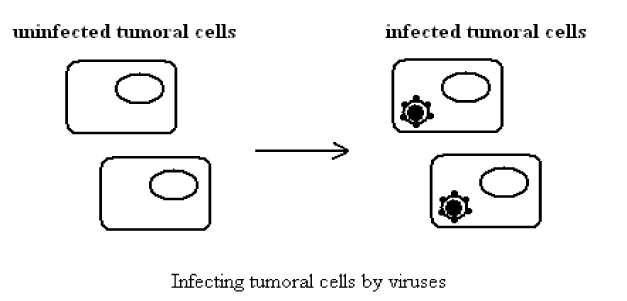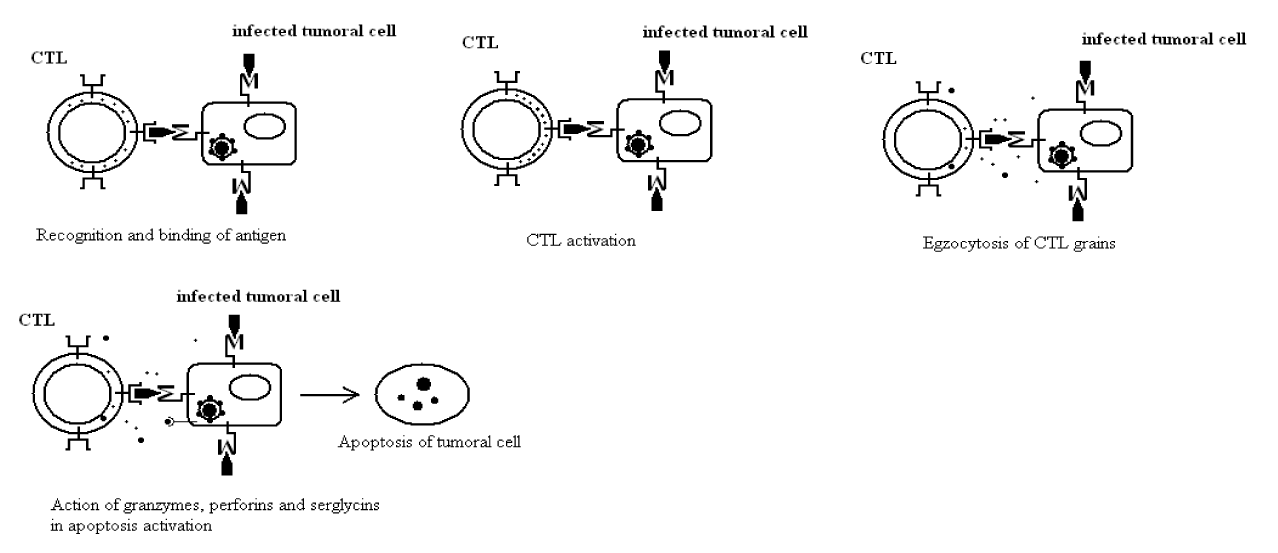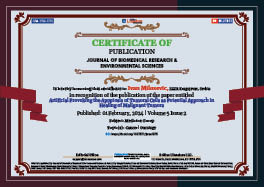Medicine Group. 2024 February 01;5(2):089-091. doi: 10.37871/jbres1875.
Artificial Provoking the Apoptosis of Tumoral Cells as Potential Approach in Healing of Malignant Tumors
Ivan Milosevic*
- Apoptosis
- Tumoral cell
- Malignant tumor
Abstract
As already known, traditional approaches in healing of many kinds of malignant tumors unfortunatelly still gives bad results. Also, our immune system is not able to respond on malignant tumors in an adequate capacity, because they are growing rapidly and they have pretty developed mechanisms in order to avoid our immune response. Potential answer how to accelerate our immune system and make it more responsive to malignant tumors maybe is hidden in an attempt to make tumoral cells infected by viruses. That way viruses would mark tumoral cells and provoke stronger immune response activating apoptosis of tumoral cells as a final effect.
Preface
When healing of malignant tumors is in the question, possibilities that immunological approaches may give are a little bit neglected, compared with traditional approaches and methods such conservative therapy, surgery, radiotherapy and chemotherapy. Otherwise, most classical immunological mechanism of recognition tumoral cells by cytotoxic CD8 lymphocytes and their desroying, as known, has its disadventages. Partly, because tumoral antigens have very low immunogenic potential (they are similar to domestic ones), partly, because tumors rapidly develope ability to avoid immune response (Figure 1). Some of them discontinue expressing antigens and/or MHC I, some of them produce different kinds of particles that suppressing our immune system. Fast growth of tumors, in most cases outplays immune response, so the concusion arises that our immune system is too slow in order to act against tumors by classical mechanisms. In so doing, the question arises how to accelerate our immune system?
Hypothesis
As known, immune system is much stronger when the response to the viral infections is in the question. Otherwise, the most efficient and safe way of elimination of tumoral cells would be a provocation of their apoptosis. Uniting these two facts brings us to one interesting model that could serve as good start for future researches.
Tumoral cell has many various receptors on its membrane, which is a favourable possibility that some of them could be recognized by some virus, which that way would infect that cell. Infected tumoral cell would be very attractive for cytotoxic CD8 lymphocytes. That way our immune response would be hasten by many times.
The first step would be an isolation of tumoral cells and making cell cultures for experimenting in vitro. In so doing, those cell cultures should be exposed to different kinds of viruses. Using of oncogene viruses, slow viruses and retroviruses for this aim should be avoided, because these kinds have very developed mechanisms against our immune system. Exposition of tumoral cells to different kinds of viruses enhances possibility for their infection, which is our goal (Figure 2). The most appropriate kinds of viruses selected for that task would be those who have enclosure made by lipoproteins (high immunogenic potential).
By virus infected tumoral cell should provoke immune response in next way (Figure 3).
Its antigen attached by MHC I is recognized by cytotoxic CD8 lymphocyte. By integrins, CD8 binds itself at the tumoral cell and becomes activated by already known immunological mechanisms. Activated CD8 lymphocyte by exocytosis, releases granzyms, perforins and serglycins which are migrating to the infected tumoral cell. Perforins are acting in order to make tumoral cell`s membrane permeable for granzyms. The role of granzyms is to trigger the apoptotic mechanisms in infected tumoral cell causing that way its apoptosis, which would be our final goal.
Discussion
Course, for now, all presented represents just thinking, mostly theoretical and statistical work, that must be supported, theoretically and experimentally by larger and more detailed exploring, connected with a significantly larger number of examinees, through the cooperation among immunological and biochemical laboratories, clinical and scientific-research centers that study and work with cancer. Actually, it is created in order to attract scientists to consider that kind of approach in this topic [1-5].
Conclusion
Generally speaking, numerous experimental researches, in vitro as well as in vivo, should give the answers to many questions concerning previous model. What kind of virus is most suitable for what kind of malignant tumor? How harmful that virus would be for normal cells as well as for the entire organism? What influence that virus would have on our immune system? Would we achieve any positive effect by it anyway, etc.?
Further, if those researches give any positive results, one day we would get very efficient and successful therapeutic method for treating of malignant tumors as well as their metastases, by itself or in a combination with already existing therapeutic procedures.
References
- Abbas AK, Lichtman AH. Immune response against tumors, Basic Immunology. 2007;177-184.
- Patic VJ. Immune response to viral infections, Medical Virology. 1995;45-52.
- Abul KA, Andrew HL, Jordan SP. Cellular and molecular immunology. W.B. Saunders Company. 2000;406-411.
- Guyton AC. Immune system physiology. Medical Physiology. 1996.
- Oxford Textbook of Cancer Biology. Francesco Pezzella, Mahvash Tavassoli, David JK, editors; 2019.
Content Alerts
SignUp to our
Content alerts.
 This work is licensed under a Creative Commons Attribution 4.0 International License.
This work is licensed under a Creative Commons Attribution 4.0 International License.











